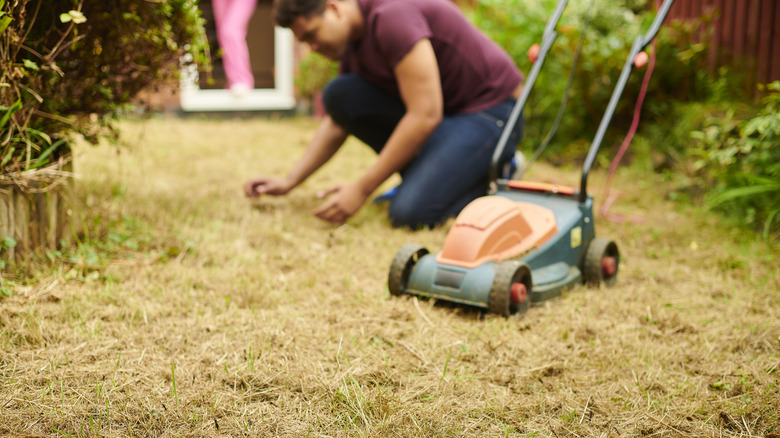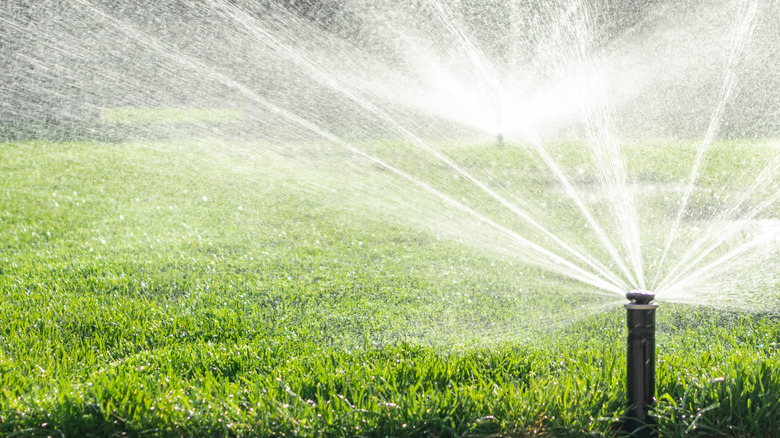For some, the lawn that sprawls outside a door is a leave it and, mostly, forget it piece of the home. Yes, the grass will be mowed and the weeds kept to a minimum. Beyond that, though, a yard is just a yard. It was growing before you arrived, and it’ll continue to do so once you set off for a new destination. Such thinking is certainly not the minority, but it’s also not the best mindset for maintaining a healthy and vibrant landscape — a landscape that is the very foundation upon which a home exists and a family functions. Keeping that foundation sound involves more than just frequent trips on the mower. You must pay attention to the soil underneath the grass, too.
Luckily, your lawn will tell you when the soil needs attention. Ignoring the signs will inevitably lead to an unhealthy yard: Weeds will invade, pests will ravage, diseases will set in, and, eventually, the grass will die. A dead yard isn’t the best spot for outdoor activities, so gone will go the backyard barbecues, rounds of catch in the front yard, and barefoot romps through the sprinkler. A lackluster lawn is also more prone to drought, erosion, and flooding. In extreme cases, the dried-up soil can cause a home’s foundation to shift and become damaged.
Identifying the health of soil

The grass is the best indicator of soil health. If it’s green and thriving, that means the soil below is receiving all the proper nutrients provided by sunlight and water. It’s then returning those nutrients to the growing grass above. When soil fails to feed the grass, the lawn responds by losing its thickness and color. If you spot such changes, it’s time to go digging to uncover the root cause.
Inspecting your lawn’s soil will require a trowel or shovel. You won’t need to dig too deep, just enough to get your hands into the ground. A soil that’s healthy will be dark and feel cool to the touch. It will crumble well, even if it’s denser soil like clay, and you should see signs of insect life or fungi. Any grass or plants you dig up from a healthy soil environment will show a sprawling root system.
If you observe anything contrary to the above, it’ll be a sign of bad soil. Dry soil naturally appears lighter, and that lack of moisture produces hard clumps. Roots aren’t able to stretch out in unhealthy soil, so they’ll be shorter or otherwise damaged. Poor drainage is another indicator that something is wrong. Standing water occurs when the ground is too hard or compact to be penetrated. At that point, the soil is already compromised, and the problem will only get worse as the soil misses out on the important nutrients brought forth by water.
How to improve soil health

The moment you notice signs of poor soil health should also be the moment you start plotting how to reverse it. If you want to get scientific with it, you can test the soil to determine which, if any, nutrients the soil is lacking and whether it has a well-balanced pH level. Testing kits are available at most garden centers. Once those answers are revealed, you’ll be better equipped to select a proper fertilizer.
Watering the soil is just as important, too, though the amount will vary depending on your soil and grass type and environmental conditions. A good rule of thumb is to water enough so that at least six inches of soil is consistently moist. If the soil is not absorbing water well, you may need to perform advanced measures to allow for better absorption, such as aeration or tilling. The equipment for that can be rented, or your local landscaping company can assist. Once the soil’s health is returned to the proper state, you’ll want to continue watering regularly and fertilizing when necessary.



